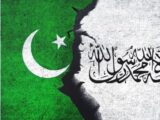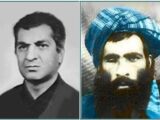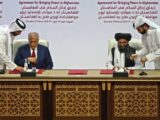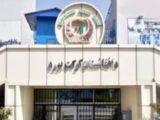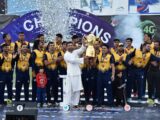Abdul Ahad Mohmand: The first Afghan Astronaut

Abdul Ahad Mohmand is the first Afghan astronaut. Before he became an astronaut, Mohmand served in the Afghan Air Force. Mohmand became an astronaut in 1988. He became the first citizen of Afghanistan to go into space. In 1988, Mohmand spent 9 days in space aboard the Mir space station. He made observations of Afghanistan during this mission. Abdul Ahad Mohmand was an Afghan citizen, he was born in Afghanistan and he trained in USSR as a pilot. The original plan was for him to be join by Mohammad Dauran Ghulam Masum. But before the launch Mr. Dauran was diagnosed with appendicitis and his trip was cancelled.
Graduated from Polytechnical High school in Kabul; graduated from Air Force Academy; Colonel Air Force; he currently lives in Stuttgart, Germany.
| Mir docked with TM-6 |
Flight Detail
Transported to the Mir orbital station a Soviet-Afghan crew comprising the cosmonauts V.A. Lyakhov, V.V. Polyakov and A A Momand (Afghanistan) to conduct joint research and experiments with the cosmonauts V.G. Titov and M K Manarov. Returned Manarov, Titov (Soyuz TM-4), Chretien (Soyuz TM-7) to Earth. Initial orbit 195 X 228 km at 51. 57 deg. Maneuvered to a 235 x 259 km orbit, then docked with Mir at 05:41 GMT on August 31st, 1988 at its 339 x 366 km orbit. Moved from aft to forward port September 8th, 1988. Undocked 03:33 GMT December 21st, 1989. Revised software installed as a result of TM-5 abort overloaded computer. Landing planned for 06:48 aborted. Backup program used. Orbital Module retained through retrofire. Recovered December 21, 1988 09:57 GMT. Landed 180 km SE Dzhezkazgan.
Kabul From Space (NASA)
Kabul, Afghanistan area as seen from the Apollo 7 spacecraft during its 39th revolution of the earth. Photographed from an altitude of 127 nautical miles, at ground elapsed time of 61 hours and 20 minutes. Also, visible in picture are the Panjshir River and the Koh-i-Baba Mountains.
Afghanistan From Space (NASA)
A northwest-looking view across Pakistan, eastern Iran and Afghanistan as photographed from the Mercury-Atlas 9 capsule by Astronaut L. Gordon Cooper Jr., during his 22 orbit Mercury-Atlas 9 (MA-9) spaceflight.
| Abdul Ahad Mohmand
· Birth Place: Sardah, Afghanistan · Nationality: Afghan · Birth Date: January, 1st, 1959 · Current Status: Inactive
|
Mohammad Dauran Ghulam Masum
|
| Abdul Ahad Mohmand, Vladimir Lyakhov and Doctor Valery Polyakov |
| The Timeline of the Soyuz TM-6 |
| Monday, August 29th 1988
Soyuz TM 6 was launched at 04:23 GMT carrying Commander Vladimir Lyakhov, Doctor Valery Polyakov and Afghan Abdul Ahad Mohmand. There was again extensive radio and television coverage of the blast-off in what was; for the Soviet Union and Afghanistan, a very symbolic mission. As a symbolic gesture, Afghan President Najibullah announced that the Afghan armed forces were to halt any further hostilities with opposition forces for the duration of the space flight. |
| Tuesday, August 30th 1988
Soyuz TM 6 spent today chasing Mir prior to tomorrow’s docking. Veteran cosmonaut Vladimir Lyakhov said that he had a hard time getting the two newcomers Polyakov and Mohmand away from the portholes admiring the view of earth. |
| Wednesday, August 31st 1988
Soyuz TM 6 docked with Mir at 05:41 GMT (9 minutes early). As usual, there was live coverage of the docking and of the transfer of the new crew into Mir to be greeted by Titov and Manarov. Dr. Valery Polyakov will stay on Mir probably until April 1989 to monitor Titov and Manarov’s health and give them psychological support. He will then monitor the health of the cosmonauts who replaced Titov and Manarov. |
| Thursday, September 1st 1988
The five cosmonauts began their joint programme of experiments. Polyakov said that Titov and Manarov had adapted long ago to weightlessness. Mohmand brewed some Afghan tea for everyone and Lyakhov said, “There is room for everyone on the station”. |
| Friday, September 2nd 1988
The cosmonauts took photographs of Afghanistan and in a 15 hour working day did medical and biological experiments. President Najibullah spoke to the cosmonauts from Kabul. He wished them success and told them the whole of Afghanistan was following their flight. (However the previous day 48 rockets were fired at Kabul airport leaving 5 dead and 2 injured.) |
| Saturday, September 3rd 1988
The five cosmonauts carried out more medical and astrophysical experiments. They also gave a news conference to Soviet and Afghan journalists and called for an end to the Afghan war. |
| Sunday, September 4th 1988
The first set of results were placed inside Soyuz TM 5. |
| Monday, September 5th 1988
The cosmonauts performed their final joint experiments and continued to load equipment and results into Soyuz TM 5 prior to Tuesday morning’s landing. At 22:55 GMT Lyakhov and Mohmand undocked Soyuz TM 5 from Mir leaving Titov, Manarov and Polyakov to continue their flight. |
| Tuesday, September 6th 1988
Lyakhov and Mohmand were scheduled to make a routine landing at 02:15 GMT. The announcement of the landing and “live” coverage never came from Radio Moscow and it was obvious that something was wrong. In fact, Radio Moscow remained silent until 07:00 GMT when they announced to the world the problems aboard Soyuz TM 5. According to Mission Control the landing had been postponed for 24 hours. Soyuz’s onboard systems deviated from pre-set operational parameters and “the decision was taken not to take risks, analyze the situation thoroughly and compute another re-entry trajectory”. Radio Moscow reassured its listeners that Lyakhov and Mohmand were fine and in touch with Mission Control. It even played a recording of the two cosmonauts laughing. Lyakhov and Mohmand spent an uncomfortable 24 hours inside the cramped Soyuz Descent Module (the Orbital Module had already been jettisoned). Once the British media had realized that there was a possibility that the cosmonauts may be in some danger, words like “marooned” and “lost in space” were thrown about. It was even suggested that they had run out of food when, in fact, Lyakhov told Mission Control that he did not wish to use the emergency rations. The Soviet media did not panic although it was obvious that if the cosmonauts did not land on their next attempt then they would have been in very serious danger. To calm things down, Valery Ryumin told “Izvestia” in an interview “nothing terrible happened”. |
| Wednesday, September 7th 1988
At 00:01 GMT the moment of truth came for Lyakhov and Mohmand when, third time lucky, they had a successful retro-fire and at 00:50 GMT Soyuz TM 5 landed near Dzhezkazgan. However, there was no live radio coverage, only live TV pictures of Mission Control were shown during the touchdown. Vladimir Solovyov said that the two cosmonauts “displayed good nerve during the incident and had the situation under control”. Lyakhov and Mohmand were later shown sitting outside their capsule being interviewed by reporters. Lyakhov said that it had been uncomfortable without proper toilet facilities but that the situation had always been under control. Mohmand said, quite simply, that these things happen on space flights. Both cosmonauts were awarded, the highest Soviet and Afghan decorations. |

